Ultrasonic Animal Repeller: Solar, Waterproof, Motion-Sensor Deterrent
$34.99
Stop the late-night raids and daytime digging with the Ultrasonic Animal Repeller, Outdoor Waterproof Solar Animal Deterrent. A built-in motion sensor spots intruders, then releases short bursts of high-frequency sound with quick LED flashes to startle cats, squirrels, skunks, raccoons, and deer. It runs on sunlight with optional USB top-ups, and the weather-resistant housing lets you place it right where animals enter so you protect beds, bins, and pathways without traps or chemicals. This is a humane, set-and-forget first line of defense for a calmer yard.
Description
If deer keep nibbling your beds or raccoons treat your yard like a midnight buffet, an Ultrasonic Animal Repeller can give you your space back without traps or toxins. It uses motion to trigger bursts of high-frequency sound and brief light flashes that startle intruders, then it resets quietly so your garden can stay calm again.
As a pest-control specialist who sets these up for homeowners, I love that solar charging and weather-resistant housings let you place units where animals actually travel along fences, beds, and sheds. Used as part of a balanced, humane strategy that rotates deterrents, this style of repeller helps reduce repeat visits from cats, squirrels, skunks, raccoons, and deer while keeping your family and pets out of harm’s way.
Key Customer Benefits
- Humane, chemical-free wildlife control that fits a family yard. Motion triggers brief bursts of ultrasound and flashing LEDs to startle animals, not injure them, which falls under “frightening devices” that avoid pesticides and can be used where children and pets play. Extension guidance notes these methods rely on sight and sound rather than chemicals.
- Solar power plus weather resistance means true set-and-forget coverage. Units that recharge by day and are sealed for rain let you place deterrents exactly where animals travel, such as along fences and bed edges, without running cords. Field advice for deer control emphasizes putting motion-activated devices right on the animal’s path for best effect.
- Proven reduction for certain species, especially neighborhood cats. Published trials on ultrasonic cat deterrents recorded meaningful drops in visits and time spent in protected zones, which aligns with RSPB-endorsed devices used by UK gardeners. If cats are your main issue, ultrasound can be a practical part of the toolkit.
- A smarter first step before costly fencing for mixed pests. University IPM programs list motion-triggered lights, sounds, and sprinklers as legitimate options for raccoons and other wildlife, particularly when you are testing pressure points and learning routes. You can start with an ultrasonic repeller, then add or rotate a sprinkler in hot zones.
- Works best as part of an integrated approach and reduces re-visits when varied. Research and extension bulletins warn that deer and other mammals can habituate to any single scare device. Rotating stimuli, changing placement, and pairing ultrasound with other mild deterrents, such as a motion sprinkler or scent repellents, helps sustain results over weeks rather than days.
- Real-world gardeners report relief when they deploy multiple units strategically. Community experience often echoes the research caveat. People see the biggest change when they cover entry routes, stagger angles, and combine tools. That pattern shows up repeatedly in homeowner discussions about raccoons and deer.
- Clear expectations for deer: good for light pressure, not a silver bullet. Decades of deer studies show pure ultrasound alone may not stop feeding when pressure is high. You will get better outcomes when ultrasound is one of several layers, or when you add a motion-activated sprinkler on key trails.
Product Description
What this device
The ultrasonic animal repeller is a compact, solar-charged, weather-sealed unit that watches your yard with a passive infrared motion sensor. When an animal crosses the detection zone, it instantly emits bursts of high-frequency sound that most people cannot hear and flashes its LEDs for a few seconds. The goal is not to harm wildlife. It simply startles intruders, nudging them to choose a different route so your beds, bins, and deck stay calm. In university and agency guidance, tools like this are grouped under “frightening devices,” which are humane options you can use around families and pets.
How it works
When the sensor sees body heat and motion, the unit plays ultrasonic tones above typical human hearing. Many garden devices vary frequency within a band because animals hear different ranges. Studies on garden cats showed a measurable reduction in visits when ultrasonic deterrents were installed and triggered only when motion occurred.
The widely referenced CATWatch trial, tested with the Royal Society for the Protection of Birds, reported fewer feline intrusions and found performance improved the longer the unit remained in place. This “only when needed” triggering matters because it limits background noise, reduces neighbor annoyance, and slows animal habituation.
Why it can be effective and what makes it different
Compared with sprays that wash off after rain or fence projects that require days of labor, a solar, motion-activated repeller gives you quick coverage on the exact paths animals use. Extension bulletins recommend placing frightening devices right on travel routes and pairing sound and light with other mild deterrents for better staying power.
Deer and other mammals are adaptable, and decades of field notes show they can get used to a single stimulus in about a week if nothing changes. That is why I advise rotating units, shifting angles, and mixing tools such as a motion sprinkler near the tastiest plants. Field and research write-ups on motion-activated light and sound devices echo the same message. They can cut activity, especially at light to moderate pressure, yet they work best as one layer in a small integrated plan.
Evidence is strongest for neighborhood cats. Controlled garden trials documented a moderate but real deterrent effect, which mirrors what many bird-friendly gardeners report. For raccoons, expert sources caution that pure ultrasound is inconsistent. Results improve when homeowners use multiple units, vary frequencies, and remove attractants like open compost and unsecured lids.
Forums and homeowner threads often split down the middle. Some users see noticeable reduction when they ring a perimeter with two to four units that cycle tones. Others report little change. For deer, extension Q&A and state wildlife pages are blunt. Ultrasonic alone rarely stops feeding when pressure is high or food is irresistible, so plan on layering with a motion sprinkler and a proven scent repellent if deer are your main problem.
Product Specifications
| Category | What to Expect |
|---|---|
| Power | Solar panel on top; USB backup charging. Typical input: DC 5 volts at 1 amp. |
| Solar panel | Common rating: 5 to 5.5 volts, 80 to 120 mA charge current depending on model and sun. |
| Battery | Internal rechargeable cell, often 3.7-volt 18650 Li-ion, around 2,200 mAh on stronger 360 degree units; some compact units use smaller packs. |
| Ultrasonic output | Frequency bands typically 13.5 to 45 kilohertz; some 360 degree units list 20 to 60 kilohertz. |
| Decibel level | Often about 90 to 110 decibels at the emitter. |
| Motion sensing | Passive Infrared (PIR) sensor. Typical detection: up to 26 feet (about 8 meters) in a 110-degree cone for single-face units. |
| 360 degree variants | Three sensors and speakers that watch all sides. Stated range 13 to 32 feet (about 4 to 10 meters) around the unit. |
| Light deterrents | Flashing or “flame-style” LEDs that activate with ultrasound. |
| Enclosure and materials | Weatherable ABS housing; typical waterproofing IP44 on many single-face models. Some 360 degree designs reach IP65. |
| Operating temperature | Often 32 to 113 degrees Fahrenheit; 0 to 45 degrees Celsius. |
| Mounting | Ground stake, wall mount, or flat-surface placement. |
| Size | Head units commonly about 13 cm wide by 10 cm high; total height with stake about 35 to 41 cm depending on model. |
| Coverage | One single-face unit covers a 110-degree arc out to about 8 meters; 360 degree units cover a full circle within about 4 to 10 meters. |
| Safety | Intended as a humane frightening device; generally safe for people and most pets. Sensitive animals like dogs, small pet rodents, and some cats may notice the sound. |
| Typical modes | Frequency “gears” that target different animal hearing ranges, plus LED-only or cycle-through modes. |
How to Use and Install the Ultrasonic Animal Repeller
Before you unbox: pick the right spot and set expectations
Walk your yard at dusk and again at dawn, when most visits happen. Look for tracks, droppings, flattened grass, or “runways” along fences and hedges. Frightening devices like motion-triggered sound and light work best when they are placed directly on these paths and used alongside other mild tactics, since wildlife can get used to a single stimulus if nothing changes over time. University and agency guidance is consistent on this point. Use motion-activated deterrents, rotate them, and pair with other methods for staying power.
Give it a first full charge
Most solar repellers arrive with a partial charge. For reliable night performance, charge the device fully before installation. Place the panel in direct sun for a full day, or top up by USB at 5 volts and 1 amp if your model supports it. Manuals for 360 degree units also warn against charging behind glass, since window glass can cut the panel’s effective input. Keep the switch off while charging if your unit has one, then switch on after the first charge. Clean the panel with a soft, damp cloth so dust does not block light.
Mount at the right height and angle
For small mammals like cats, squirrels, and skunks, set the head of the unit roughly eight to ten inches above grade so the passive infrared (PIR) sensor “sees” body heat crossing the beam. Aim the face slightly downward along the traffic line. For deer, raise the head to about two to three feet and angle along the approach. Manuals stress a clear line of sight for the PIR and advise keeping foliage from waving directly in front of the sensor, since warm leaves in sun can cause false triggers.
Choose single-face or 360 degree coverage
If you know the entry side, a single-face model works well because its PIR typically “watches” a 110 degree arc out to about 26 feet. If routes are uncertain, a 360 degree model with three PIRs and three speakers triggers from any angle, commonly quoting 20 to 60 kilohertz sound output and a circular zone around the stake. Manufacturers describe each side of 360 degree units as sensing and firing independently to conserve battery life between triggers.
Set sensitivity and frequency modes with a purpose
Start with moderate sensitivity so the device triggers on animals rather than wind. Many garden repellers offer dial-based “frequency bands.” Lower bands target rodents and dogs, middle bands are marketed for cats, raccoons, skunks, and similar-sized mammals, and higher bands reach into bat and small-mammal ranges. Use a mode for one week, then rotate to slow habituation. An example manual lists bands from about 13.5 to 24.5 kilohertz for common backyard mammals.
Place by species: what tends to work
Cats: Evidence is strongest here. A peer-reviewed garden trial found an ultrasonic device produced a moderate but real reduction in cat intrusions, and the RSPB summary noted the effect improved over time as cats learned to avoid the protected zone. Aim units along fence tops, gravel paths, and near bird feeding areas, then leave them in place for several weeks before you judge results.
Raccoons and skunks: Ultrasound alone is hit-or-miss. You will see better results when you remove attractants and combine tools. Use the repeller at bin areas, then lock lids and add a bungee. If pressure remains high, pair a motion sprinkler at the most attractive food source. Extension bulletins consistently recommend multi-method deterrence for adaptable mammals.
Deer: Be candid with yourself. Agencies report ultrasonic noisemakers can help initially yet deer often get used to them. Place the unit on the trail into your beds, then layer with a motion sprinkler on the tastiest plants and a proven scent repellent. Rotate positions weekly. If feeding pressure is heavy, plan to add physical protection.
Step-by-step installation
- Assemble and charge. Attach stake and tubes if included. Charge in full sun or by USB at 5 volts and 1 amp. Keep the switch off while charging if your model requires it.
- Test on the bench. Wave your hand in front of the PIR to confirm LEDs flash and the device emits sound. Some models also have a test tone audible to humans.
- Prepare the ground. If soil is hard, pre-make a pilot hole for the stake so you do not stress the housing.
- Place for line of sight. Install where the PIR has a clear view of the approach. Avoid shrubs directly in front of the sensor and do not point across a busy sidewalk to prevent constant triggering.
- Aim and level. Tilt slightly downward along the run. For 360 degree units, center them in open ground near the hotspot.
- Dial in sensitivity and frequency. Start mid-range, then adapt. If you are protecting birds from cats, favor the mid band used in cat trials.
- Review after seven to ten days. Check for tracks and plant damage. If activity shifts, move the unit five to ten feet, change the mode, or add a sprinkler where damage persists. This rotation is what slows habituation.
Spacing and multi-unit setups
Sound behaves like light. It weakens with distance and obstacles. For a fence run, overlap coverage so an animal cannot slip between cones. If a single-face unit quotes about 26 feet at 110 degrees, set two heads twelve to fifteen feet apart and cross-aim them slightly so the trigger zone is continuous. For an open vegetable bed, a single 360 degree unit in the center can “wake up” at any approach, then you can add a second at the most damaged edge if visits continue.
Maintenance that actually extends life
Wipe the solar panel monthly with a soft cloth, since dust can cut charge rates. Avoid abrasive cleaners. Check that spiders have not webbed over the PIR window. Manuals also recommend storing electronics if temperatures will drop below freezing for long periods. Keeping the panel clean and in six to eight hours of direct sun is the difference between a device that fires all night and one that dies after dinner.
Common issues
If the unit “ghost triggers” with no wildlife present, reduce sensitivity a notch and clear waving branches from the beam. If it triggers too rarely, raise sensitivity and lower the head to the animal’s height. If nights are cloudy and activity drops, give the device a USB top-up, then check performance again. If cats ignore the device at first, leave it in place for at least two weeks. In the RSPB trial, effectiveness increased with time as cats learned to avoid the protected area.
Safety and neighbor-friendly use
These devices are designed as humane “frighteners.” Agencies note they operate at frequencies that do not violate typical noise ordinances, yet pets with sensitive hearing may notice them. Aim away from pet runs and turn off any audible beep modes if your neighbors keep dogs. As with any outdoor electronic, respect the weather rating and avoid sprinklers or power washers directly on the housing unless your model is clearly rated for that use.
FAQs About Ultrasonic Animal Repellers
Do ultrasonic animal repellers actually work?
Short answer. Sometimes, for some animals, under the right conditions. The strongest evidence is for neighborhood cats. A peer-reviewed garden trial found the CATWatch ultrasonic deterrent reduced cat intrusions and time spent in protected areas, with effectiveness improving the longer the unit stayed in place. That lines up with the Royal Society for the Protection of Birds’ summary of the same study.
For deer, raccoons, and other adaptable mammals, university and wildlife agency guidance says motion-activated sound and light can help at first, but animals can learn to ignore a single stimulus. These tools work best as one layer in a small plan that also includes removing attractants, using motion sprinklers, or adding physical barriers.
Will this bother my dog or indoor pets?
Most people cannot hear ultrasonic output. Dogs, cats, and small mammals can hear higher frequencies, and reactions vary. Many pet owners report no issue when devices are placed outdoors and aimed away from pet areas, while others notice sensitivity to high-pitched tones. If you keep dogs, aim the repeller away from runs and avoid any optional beeper modes. Monitor your pets and adjust placement if they seem uncomfortable.
What range should I expect from the sensor and the sound?
Most manuals for single-face units advertise a passive infrared (PIR) detection angle of about 110 degrees with a stated range around 8 to 9 meters or up to around 26 feet in clear line of sight. Claims vary by brand, and obstacles will shorten that distance. Always place the head where the sensor can “see” the animal’s approach, not behind shrubs.
Which IP rating is good enough for outdoor use?
Look for at least IP44 for general outdoor exposure to rain from any direction. IP65 adds stronger protection against dust and water jets and is a safer bet if you have heavy storms or nearby sprinklers. Higher numbers indicate stronger ingress protection.
Do these help with deer?
They can help under light browsing pressure, especially when combined with other tactics. State wildlife guidance notes that motion-activated ultrasonic noisemakers were effective initially, but deer often habituated. Pair your repeller with a motion sprinkler at the tastiest plants and rotate position weekly. For heavy pressure, add fencing around priority beds.
I read online that ultrasonic repellers do not work at all. Who is right?
Both viewpoints show up in the literature and in homeowner threads. University extension publications caution that many plug-in indoor ultrasonic gadgets are unreliable, and some field reviews are negative. At the same time, there is peer-reviewed evidence for cat reduction in gardens and practical success when devices are placed correctly and used with other methods. The most realistic stance is to treat ultrasound as a helpful layer, not your only solution.
How should I place the device for best results?
Charge fully first. Mount the head eight to ten inches above ground for cats and skunks, and two to three feet for deer. Aim along known routes and keep the sensor’s window clear of waving leaves. Rotate modes and adjust the angle every week to slow habituation. These tips appear in multiple product manuals and in wildlife control guidance.
Are there credible specs I can check before buying?
Yes. Manuals commonly list a PIR angle of 110 degrees, detection range around 8–9 meters, ultrasonic frequency bands roughly about 13.5 to 45 kilohertz, a rated loudness around 90 to 110 decibels at the emitter, and an IP rating such as IP44. Solar plus USB backup is typical. Check the manual or listing for your exact model.
Do gardeners on forums have any real-world tips?
A few patterns repeat. Gardeners who layered tactics saw better results. Many recommend motion sprinklers for deer and careful trash control for raccoons. Several threads note that some people can hear certain units, which is a neighbor consideration, and that fake reviews are common on low-cost listings. Use a reputable brand, read the manual, and be ready to reposition and combine tools.
Can ultrasonic repellers replace fencing?
They are a first step and a useful layer, not a full replacement for heavy pressure. Agencies and extensions continue to rank physical barriers high for deer and other determined wildlife. Use ultrasound to cover approaches while you trial routes and learn where a partial fence or low gate will make the biggest difference.
Do 360 degree models work better than single-face heads?
They are easier to live with when you do not know where animals enter since they watch in all directions. If you have a defined trail along a fence, a single-face unit aimed like a flashlight can be just as effective. Manuals show both styles using similar PIR angles and frequency bands, so choose based on layout.
What if mine triggers constantly or not at all?
Reduce sensitivity if wind or sun-warmed foliage is causing false triggers. Raise sensitivity and lower the head if it misses small mammals. After several cloudy days, top up by USB, which most manuals recommend for reliable night coverage.
Conclusion
If you take one thing from this guide, let it be this. An ultrasonic animal repeller is a humane, low-effort way to nudge wildlife off your beds and paths, especially for neighborhood cats. That is not sales talk. It is what the research and field guidance actually say. In a peer-reviewed garden study, an ultrasonic unit cut cat visits and got better the longer it stayed in place.
For adaptable mammals like raccoons and deer, the honest path is an integrated plan. Extension services and wildlife programs repeat the same advice. Use motion-triggered frightening devices, rotate your setup so animals do not learn a routine, remove food lures, and add a second tactic where pressure is high. A motion-activated sprinkler is a strong companion because it adds a harmless shock of water and noise right when the animal enters the zone, which slows habituation.
So here is the simple game plan I recommend to clients and use in my own yard: place a solar ultrasonic animal repeller directly on the entry route, give it a full first charge, keep the panel clean, and rotate frequency modes weekly. If you still see damage, layer in a motion sprinkler on the tastiest plants or by the bins. That two-step approach is inexpensive, humane, and aligned with mainstream IPM guidance.
Related products
-
Trash Can Lid Locks, Bear-Resistant Trash Can Strap for Raccoons and Wind
$15.99 Buy Now -
4 Pack Solar Animal Repeller with Red Lights for Night Predators
$30.99 Buy Now -
Sale!
Peppermint Oil Repellent Spray for Mice, Raccoons, and Ants
$27.99Original price was: $27.99.$24.99Current price is: $24.99. Buy Now -
Sale!
Absorbine UltraShield Green All‑Natural Fly & Insect Repellent for Horses & Dogs
$29.69Original price was: $29.69.$23.09Current price is: $23.09. Buy Now
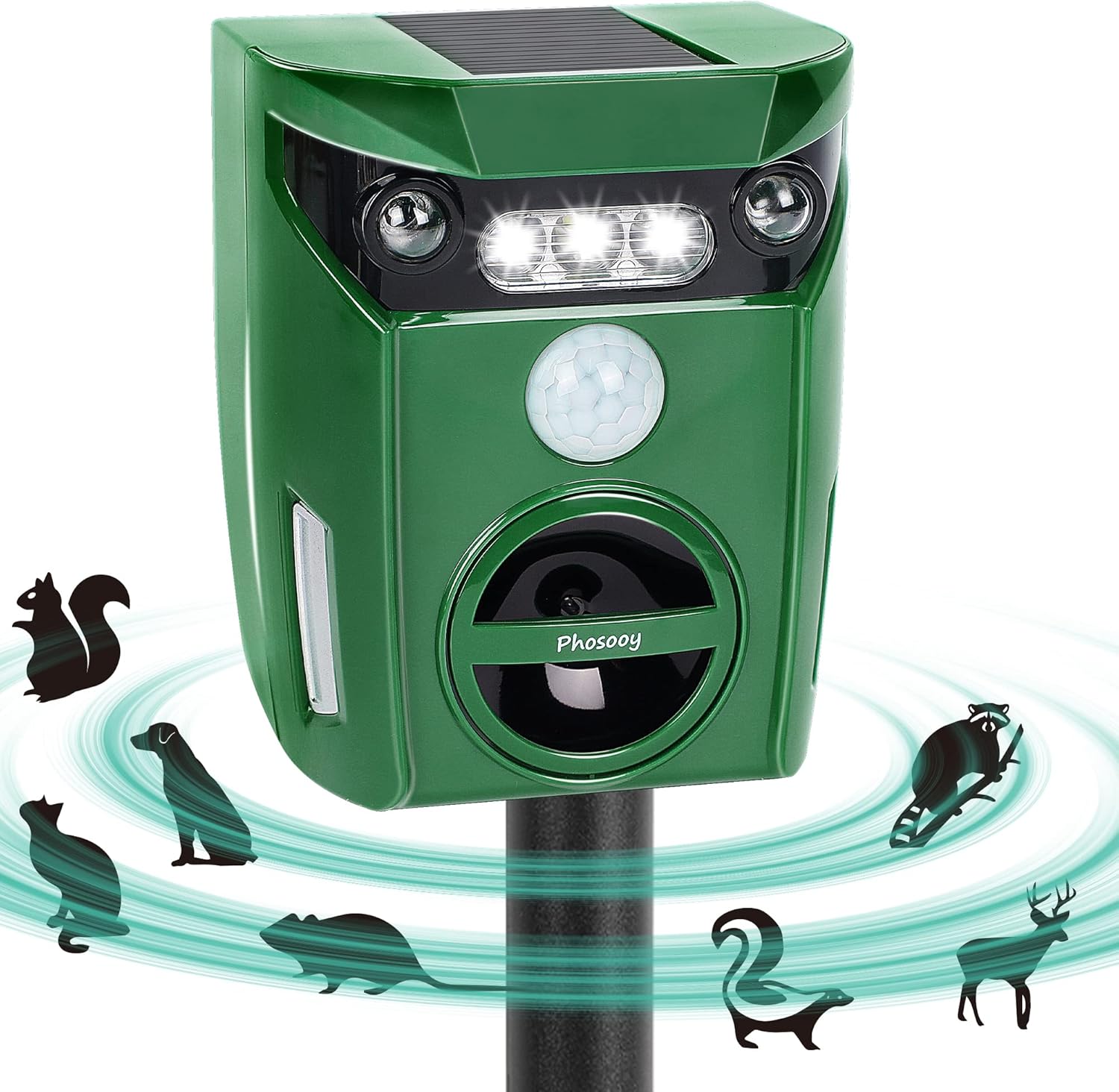
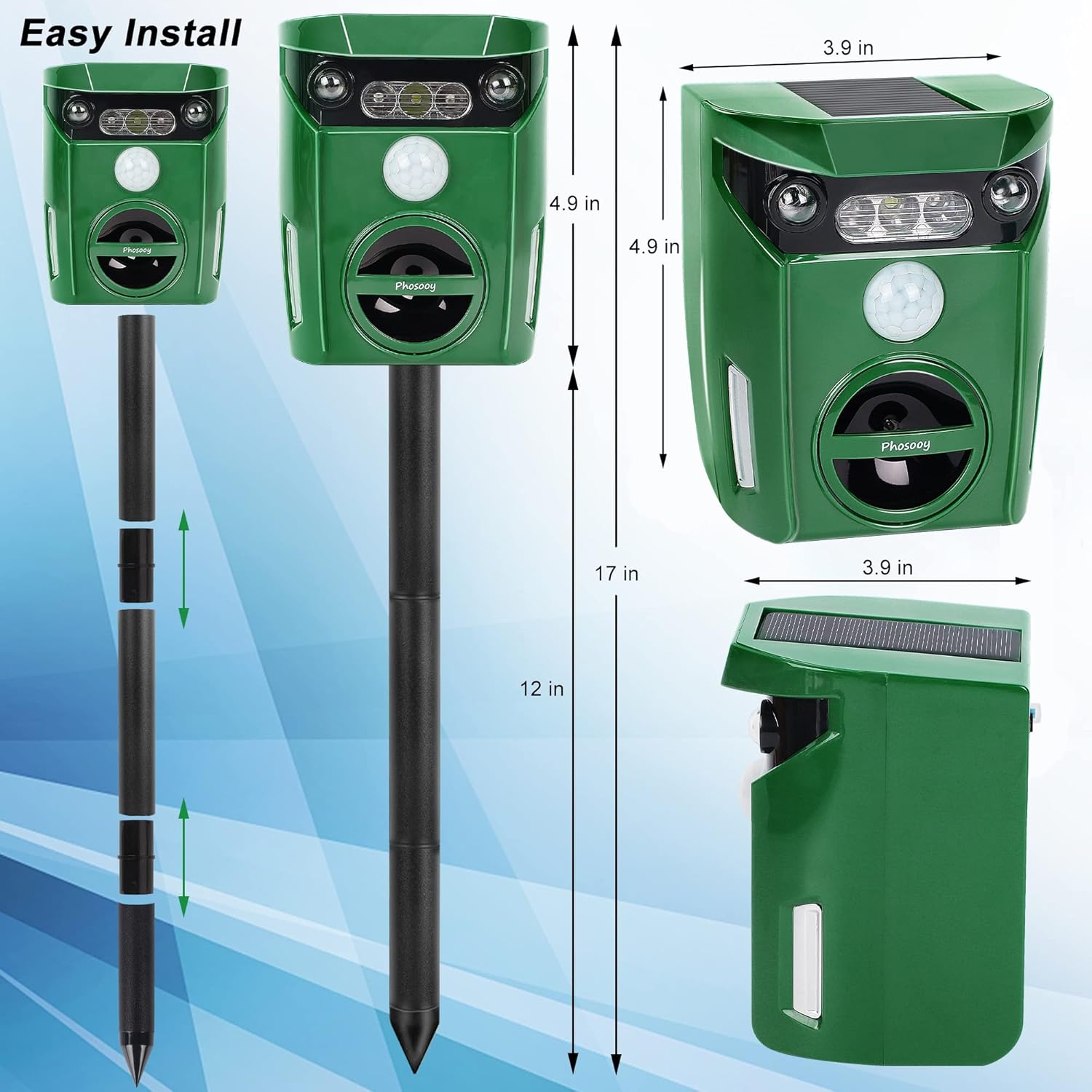
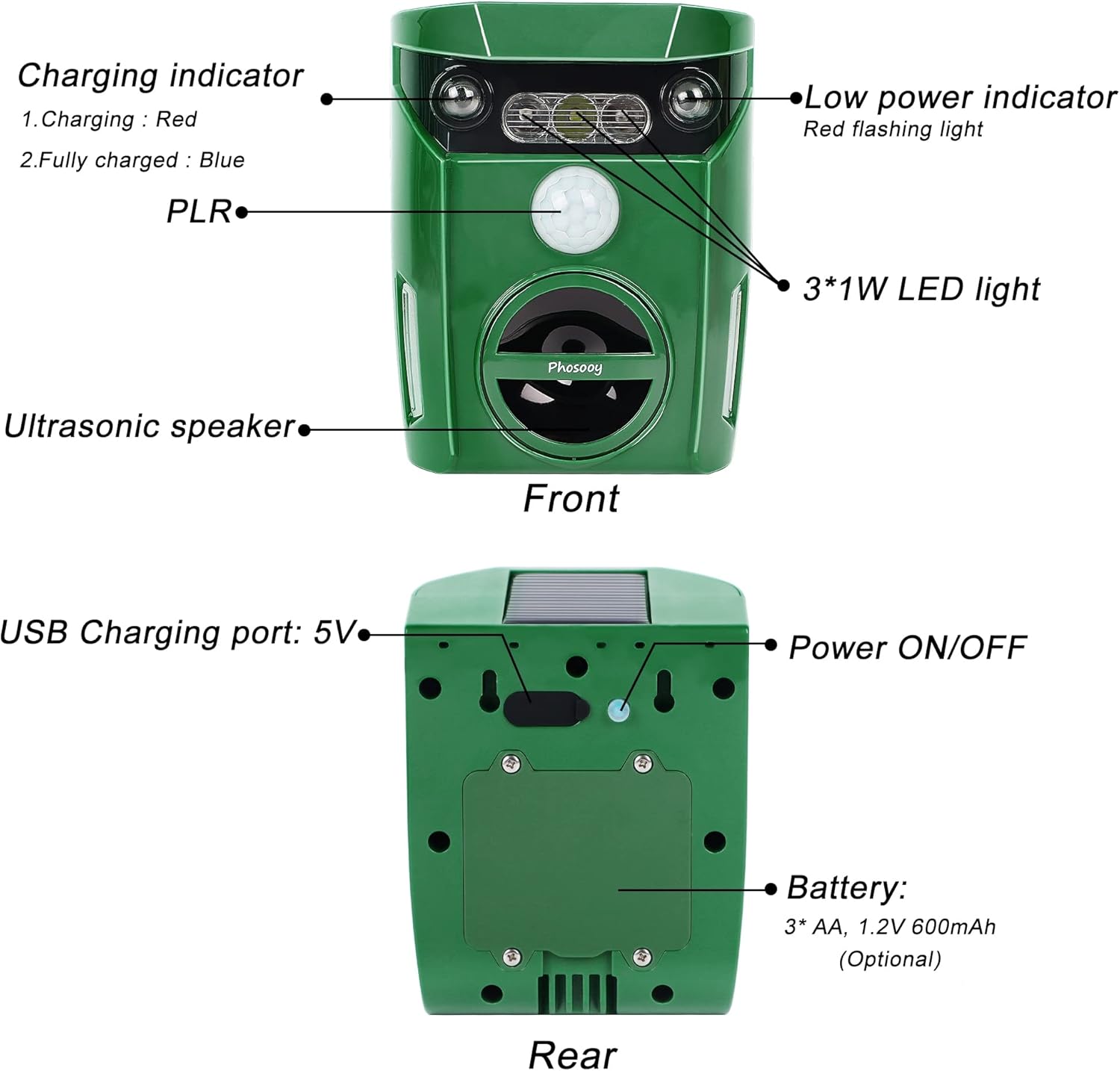
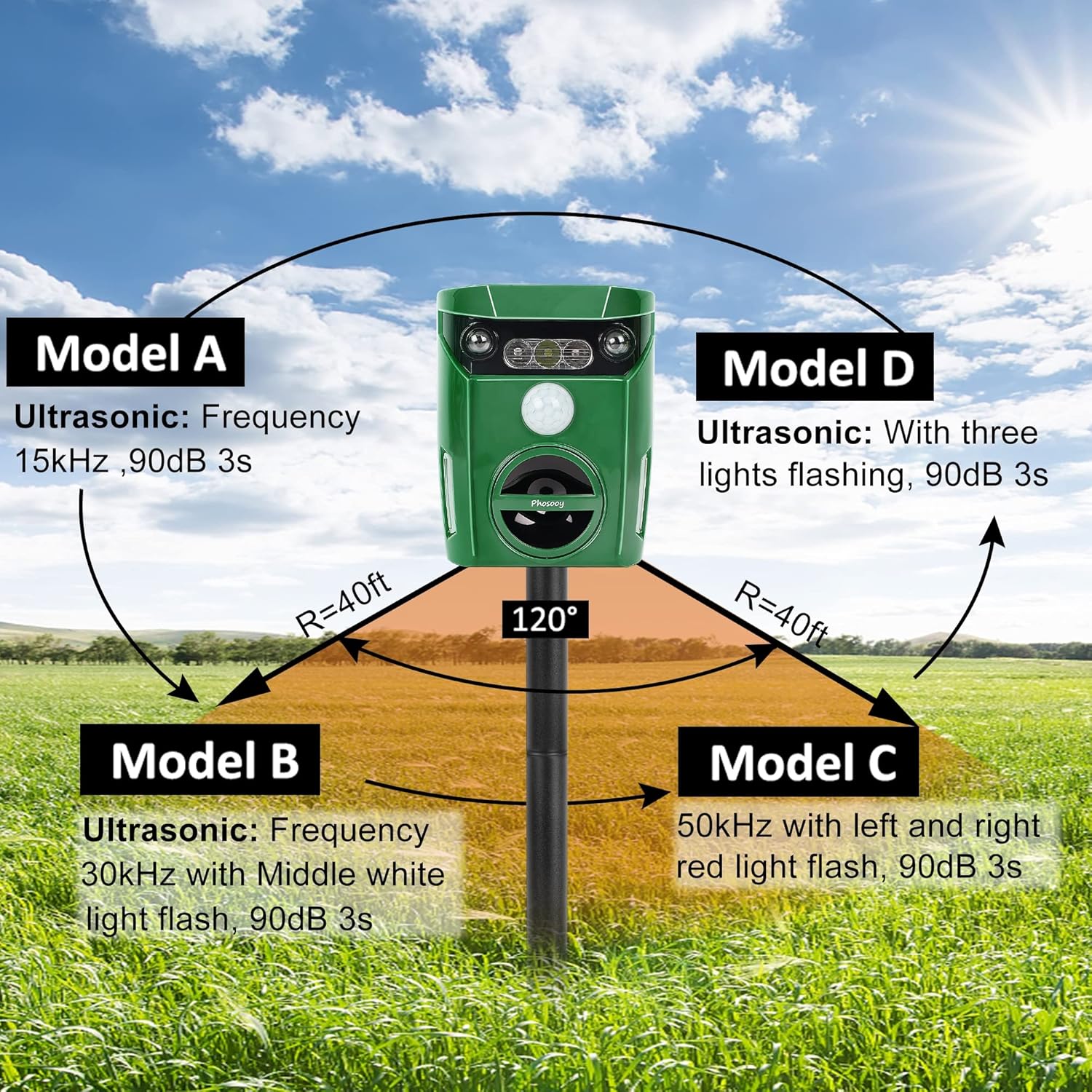
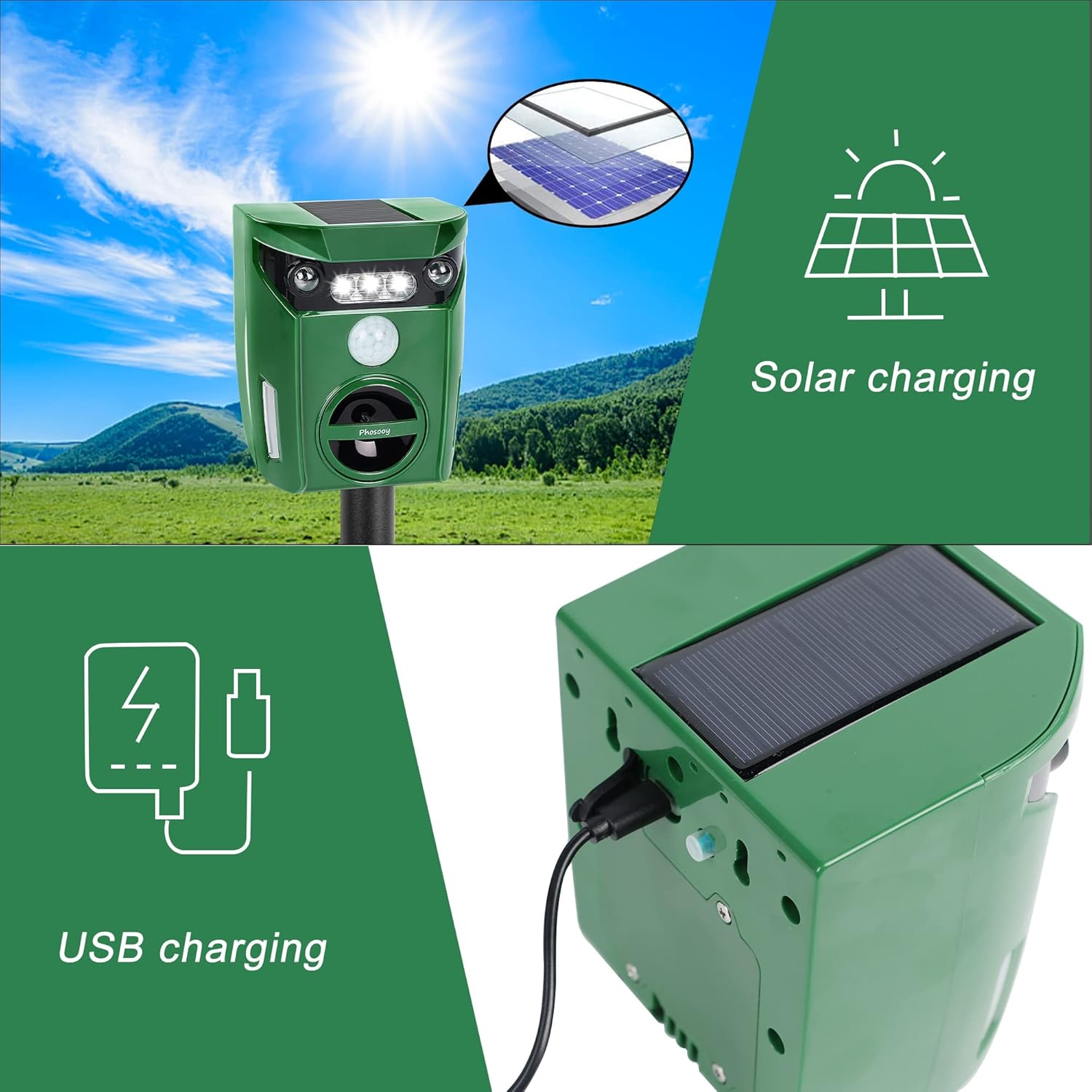
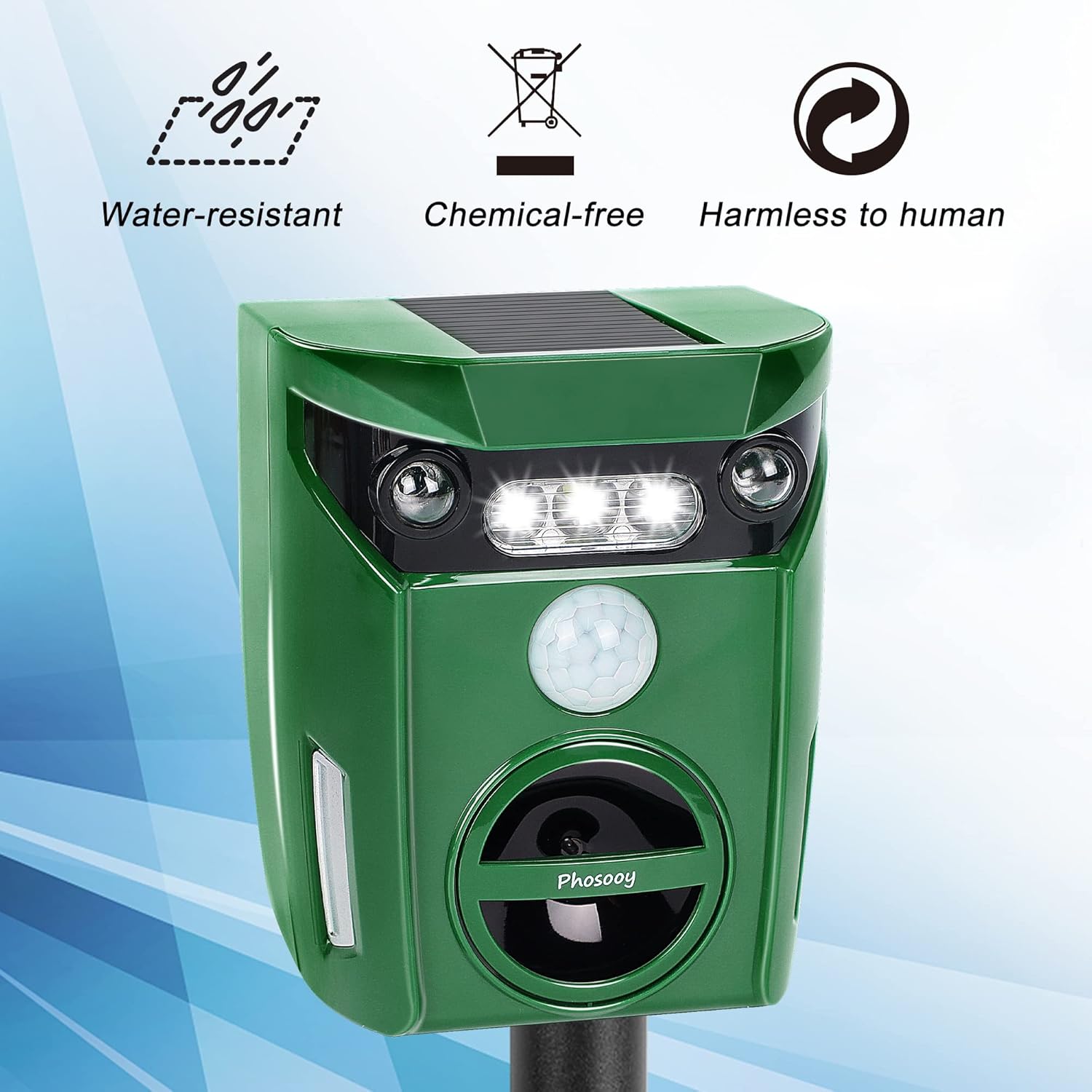

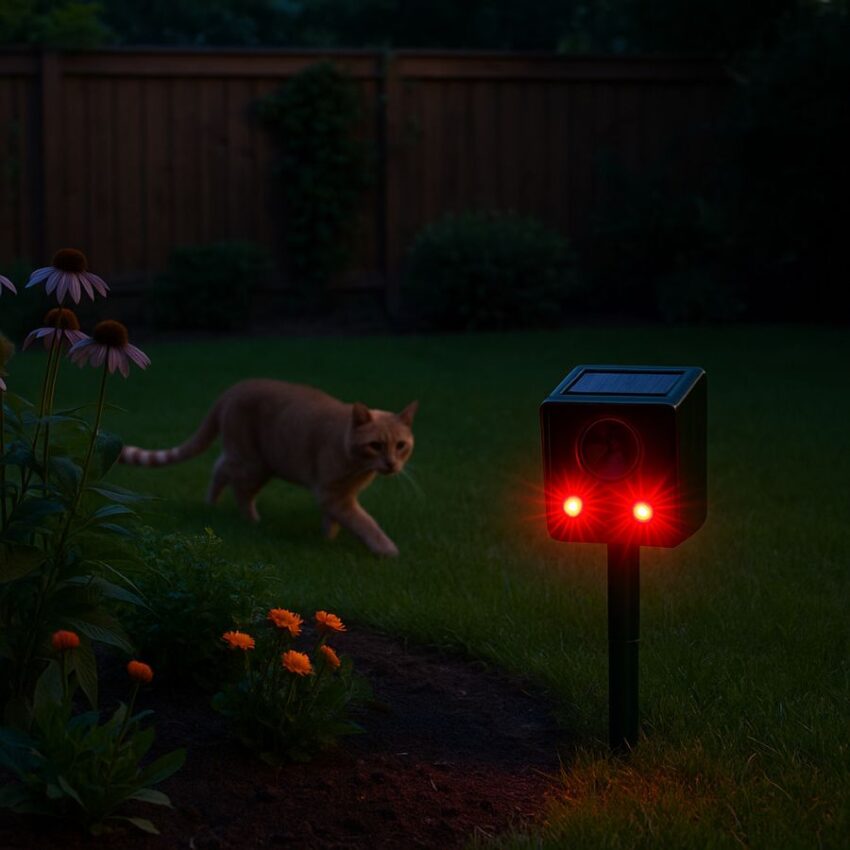
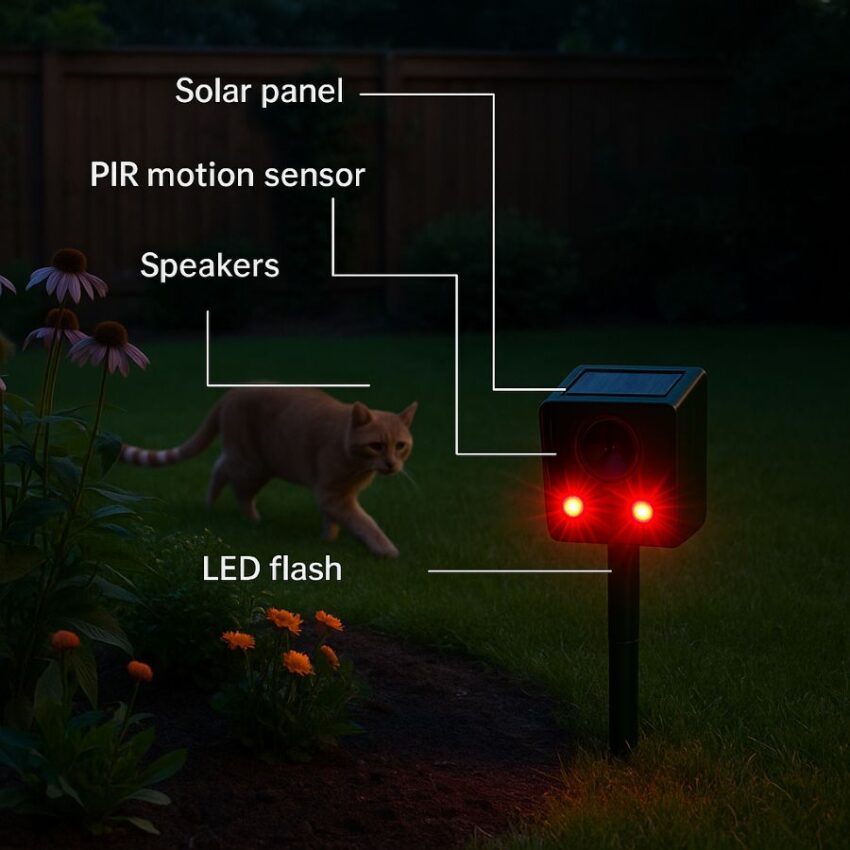
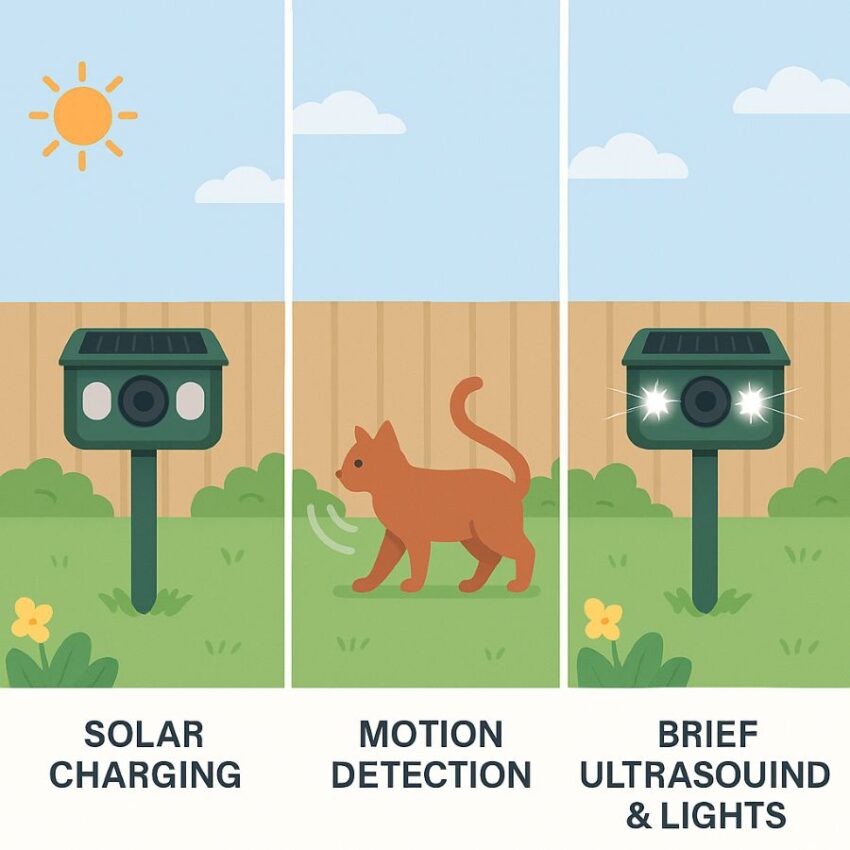
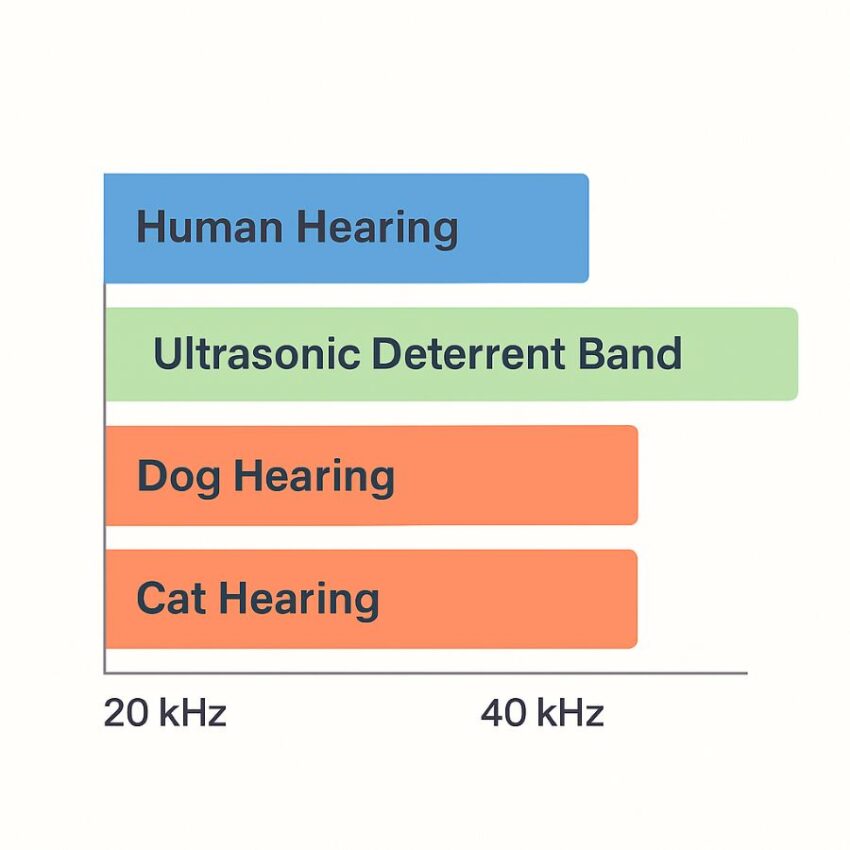
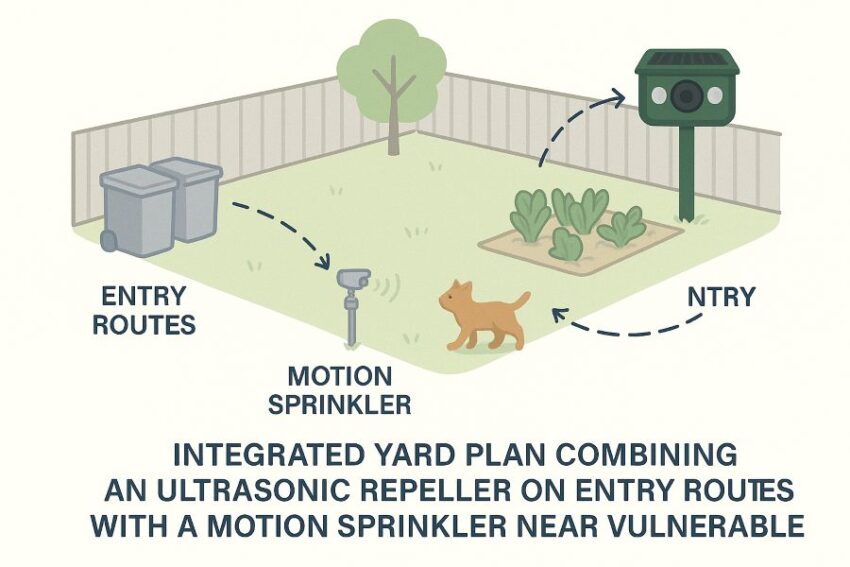
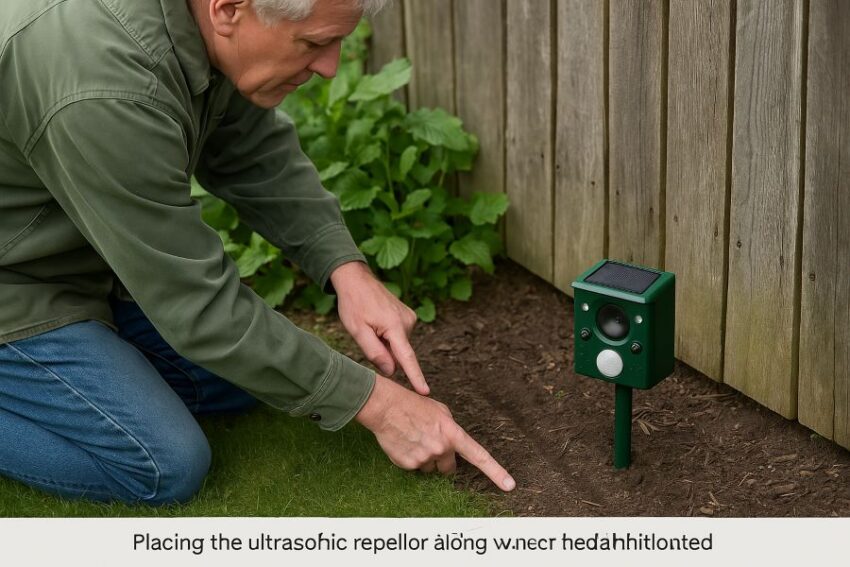
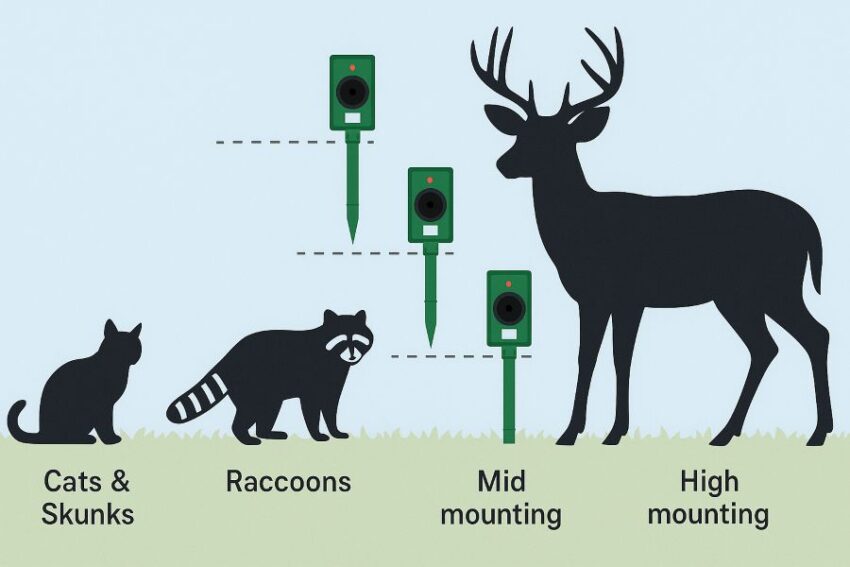
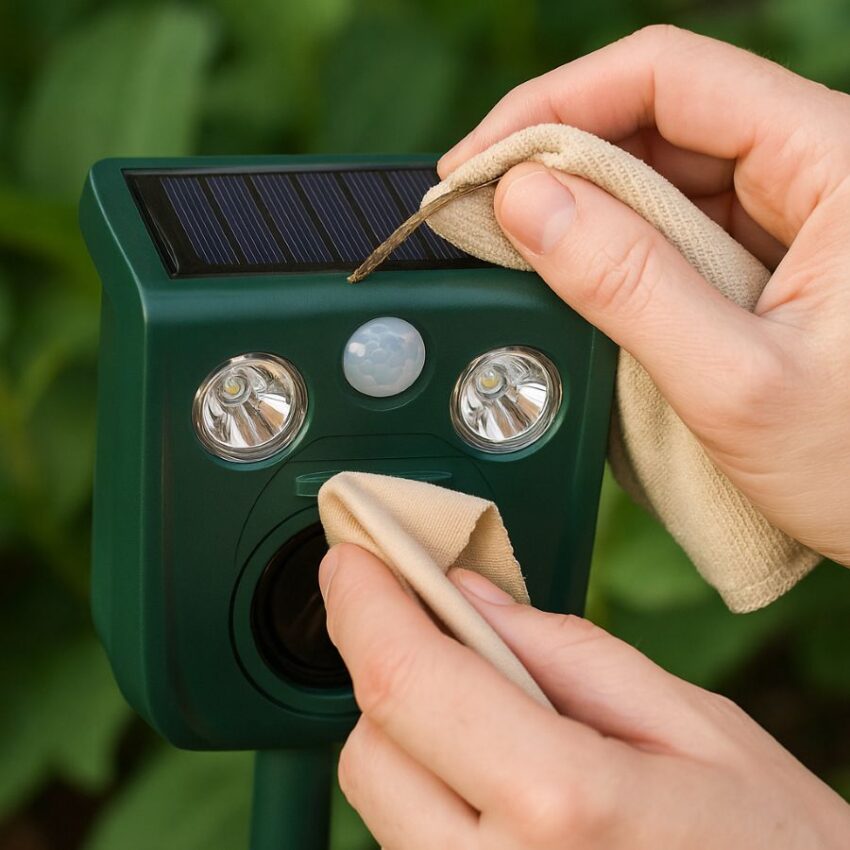
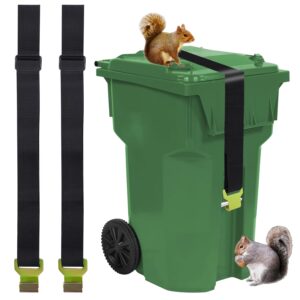
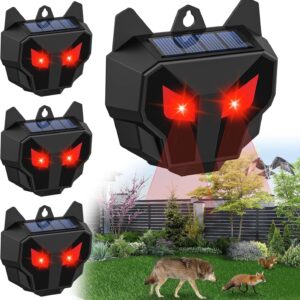
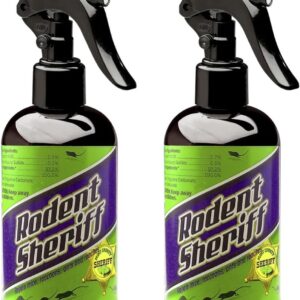
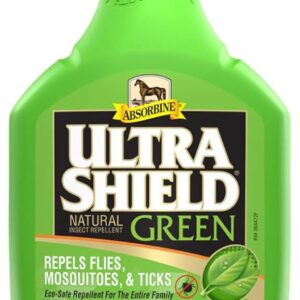
Reviews
There are no reviews yet.